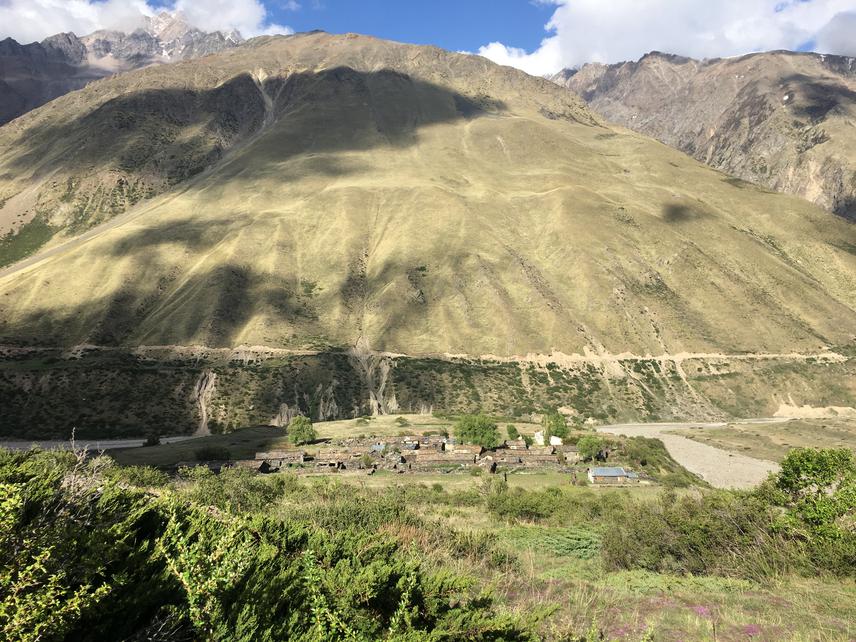Soham Sadashiv Kacker
The alpine meadows or Bugyals of the Gori Ganga and Ralam valleys in Uttarakhand represent a uniquely biodiverse ecosystem which is home to several species of medicinal plants. Historically, the collection and trade of these plants has supported the livelihoods and lifeways of local tribes and communities, however the commercialisation and subsequent overcollection of many species has resulted in their endangerment. Traditionally, these communities have developed certain informal customs, cultures and institutions which govern the use of valued species to prevent their depletion, although these have been strained by the pressures of changing social and economic factors.

The village of Pachu as seen from the hill above it. Such small seasonal villages form the backbone of the unique lifestyle of agropastoral transhumance which characterises the valley. ©Soham Kacker, 2024.
This study focuses on the underlying traditional, cultural, or spiritual practices which impact the collection of these plants, and in turn directly impact their ecology, functional relevance, and conservation status. Examining these practices in greater depth is essential to developing to better understanding of the ways in which resource use is driven and regulated in these delicate habitats. The study utilises an interdisciplinary set of methods from environmental anthropology and ethnobotany to answer questions about whether traditional ways of collection still exist, whether they are relevant, how and in which direction they are changing, and what are the key drivers of this change.
It is hoped that the findings of this study will inform several aspects of local plant conservation such as integrating traditional practices into the monitoring of wild plant populations; building a more nuanced view of trends in plant collection; and highlighting key areas where policy can be strengthened or tailored to ensure sustainable use and system recovery.
Header: A field of anemones above the village of Martoli, with the sacred birch forest of Martoli in the background. Sacred natural sites play a crucial role in grassroots level conservation in the region but are still poorly understood. ©Soham Kacker, 2024.